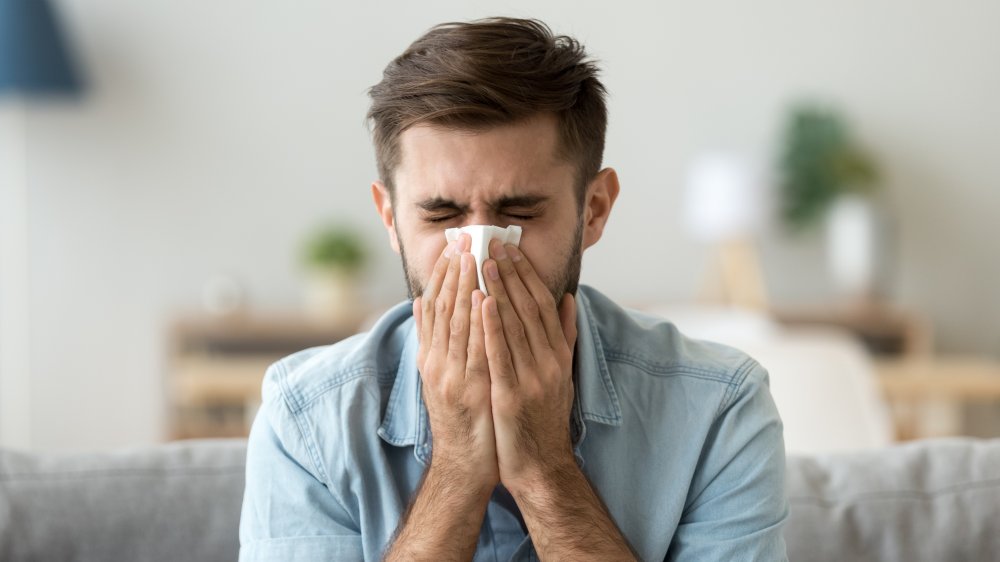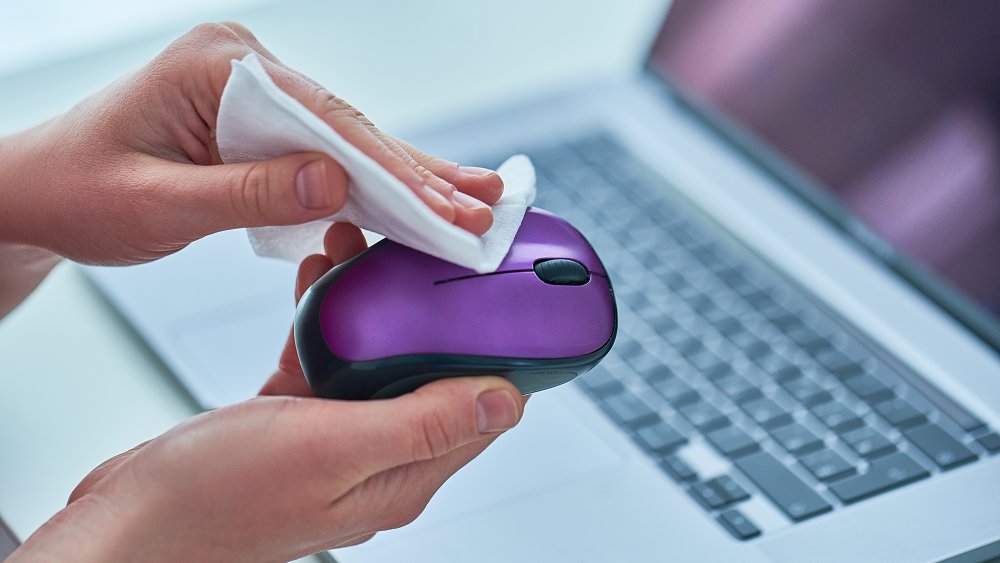How Long Flu Germs Really Live, According To Science
Hold the door for someone, and you could grasp some flu germs. That's because the influenza virus can live for up to three days on plastic and stainless steel, two materials we touch daily on doorknobs and door handles, faucets, light switches, and cell phones (via Insider).
Kelly Reynolds, MSPH, Ph.D., a microbiologist at the University of Arizona's Zuckerman College of Public Health, told Insider that flu viruses survive the longest on hard surfaces, from 24 to 48 hours. So to protect yourself from germs, be sure to disinfect those subjects you touch often but rarely think to wipe. (We're looking at you, keyboards and remote controls!)
Most flu transmission occurs in homes, schools, and workplaces because of "frequently touched communal items," according to one 2011 study. Researchers found that after 24 hours, the virus lingered on computer keyboards, telephone handsets, kitchen work surfaces, and objects made of varnished oak, unvarnished oak, and aluminum (via PLOS).
Flu germs dissipate quickly on glass. On porous materials such as paper and cotton, they can live for about eight to 12 hours, this research says. Money is another germ carrier. The researchers cited a 2008 study where seasonal influenza viruses lasted on Swiss banknotes for up to three days. When encased in mucus from a sneeze or a runny nose, the viruses stuck around for eight to 17 days.
Sneeze into your shoulder or elbow, please!
Wipe off what you touch often
As much as we touch surfaces daily, we don't pick up every germ out there because our skin has a built-in defense. According to the National Institutes of Health, skin fights off microbes by producing antimicrobial substances called peptides (via NIH).
Flu germs really live for about five minutes on skin. The problem is, we're constantly replenishing them by touching public surfaces like grab bars on public transportation, door handles, payment keypads, shopping carts, and gas pumps, and then rubbing our eyes or touching our noses (via Journal of Infection). Remember, mucus gives them a protective shield, so to speak, enabling them to last longer.
Disinfect around your home by spraying plush toys and other soft items such as furniture or pillows with a non-bleach sanitizing spray, Reynolds told Insider. Wash bedding with bleach or in hot water (above 140 degrees Fahrenheit), which kills germs.
Wipe phones, keyboards, remotes, doorknobs, countertops, and light switches with disinfecting wipes that contain 70 percent isopropyl alcohol, or rubbing alcohol in the same concentration (via Hartford Healthcare).
As for hands, wash them before, during, and after preparing food; after touching garbage and using the toilet; after blowing your nose, coughing, and sneezing; and after you've been out in public (via CDC).
Use running water, lather with soap, and scrub for at least 20 seconds, then rinse and dry. No sink available? Rub your hands together using a hand sanitizer containing at least 60 percent alcohol, the CDC says.


